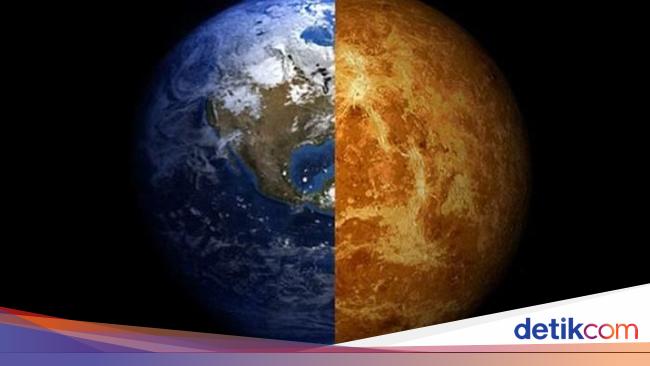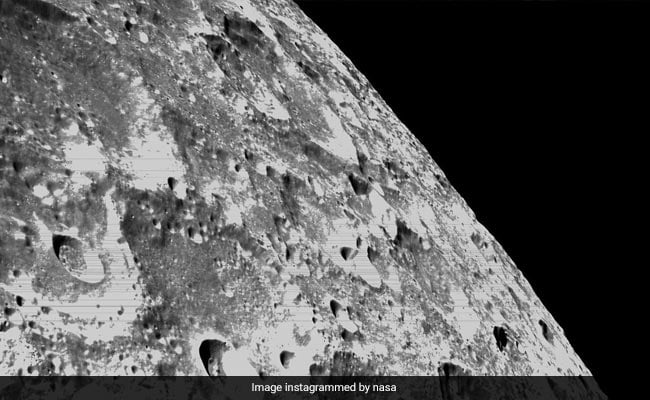Jakarta –
volcano so it is a sight to behold for the eyes. Behind its beauty, even volcanoes are lethal when they erupt. One of the planets even turned into hell due to the volcano.
When there are enough of them and the eruptions are strong and prolonged, volcanoes can kill their host planet.
Today’s Venus as we know it is a planet with scorching “hellish” eyesight. The planet’s temperature is over 464 degrees Celsius, so hot it could melt lead and the spaceships that pass through it.
That’s why, of all the missions Russia has sent to the planet’s surface, only four have managed to transmit images before quickly succumbing to the extreme conditions on Venus.
But today’s Venus may be very different from ancient Venus. Several studies have shown that ancient Venus had an atmosphere similar to that of ancient Earth.
This planet may also have large amounts of water on its surface. It’s possible that simple life once existed on Venus, but there’s still not enough evidence to prove or disprove it.
A new study suggests that massive volcanic eruptions over long periods of time could be responsible for transforming the planet into what it is today. If there was simple life on ancient Venus, volcanism was its downfall.
The study also shows how intense volcanic activity played a role in shaping Earth’s habitability and how Earth avoided the same fate as Venus.
The study is titled “Large-Scale Volcanism and Heat Death of Terrestrial Worlds” and is published in The Planetary Journal. Dr. Michael J. Way of NASA’s Goddard Institute is the lead author. He’s been studying Venus for years.
“By understanding the records of large icy regions on Earth and Venus, we can determine whether these events caused the current state of Venus,” Way said. Scientific alarm.
The Earth has experienced periods of eruptions volcano long in its history. The Large Igneous Provinces (LIPs) are evidence of periods that can last hundreds of thousands of years if not millions of years.
We know many LIPs on Earth, and we know that in the last 500 million years they have coincided with periods of climate change and mass extinctions.
The study shows that Venus underwent a massive volcanic explosion that created today’s Venusian atmosphere, with its extreme temperatures and pressures. More specifically, violent explosions in the short period of a million years are said to have created a runaway greenhouse effect.
The runaway greenhouse effect occurs when the atmosphere prevents the planet’s heat from radiating out into space. With no chance to cool off, the temperature soared to extreme levels, like a greenhouse with all the vents closed.
Venus’ greenhouse effect is compounded by its lack of plate tectonics. The Earth’s plate tectonics allows heat from the planet’s interior to reach the surface by periodically opening the mantle. It also removes carbon dioxide from the atmosphere and into rock through weathering and subduction.
Venus has the most volcanoes in the solar system
Earth isn’t the only planet with volcanoes. Other planets have it too, even Venus, which is often called Earth’s twin, has thousands of volcanoes.
“In the Solar System, Venus has the most volcanoes, so Earth, Mars is the largest, while Jupiter, Saturn and Neptune, which have volcanoes, are the moons, not the planet itself,” said ITB volcanologist Dr Eng. Ir. Mirzam Abdurrachman, ST, MT Live Eureka! The secret of the volcano, some time ago.
Venus is often called Earth’s twin due to its similar size and structure. But Venus has extreme surface heat and a thick, toxic atmosphere. Because of this, conditions and the number of volcanoes on Earth and Venus are different.
“Venus has 1,600 volcanoes, this is the planet with the most volcanoes. On Earth, where there are ‘only’ 1,500 volcanoes, we often feel worried about all the disasters and also the benefits,” Mirzam said.
Unlike volcanoes on Earth, volcanoes on Venus come in a variety of shapes, from conical to shield-like. This is because mountains on Venus form under very high pressure with a very thick atmosphere.
“With a CO2 composition that’s 97 percent of the total atmosphere, it makes clouds hot so volcanoes are like pancakes. The pressure on Venus is 90 times the pressure on Earth, so volcanoes are always flat,” he said. said.
Life on Earth is really very worrying when there is strong and continuous volcanic activity. But these conditions always recover and volcanoes never let the greenhouse effect go out of control. Venus, meanwhile, suffers from these effects to this day. What is the difference?
The extent of the eruption has something to do with it. The surface of Venus is 80% covered by hardened volcanic rock. Sulfur in the atmosphere is also clear evidence of volcanic activity. And Venus’ surface has fewer craters than expected, indicating abundant volcanic activity over the last few hundred million years.
But this research could make anyone uncomfortable. Even if the Earth has avoided the runaway greenhouse effect, it may only have avoided it a little.
For some reason, Earth has remained habitable for billions of years, and Venus is much worse off. Could the Earth one day have the same fate as Venus? Nobody knows.
While we may never have a complete understanding of all the factors that make Earth and Venus so different from one another, volcanic activity certainly played a part.
After VERITAS, DAVINCI and EnVision have done their work investigating Venus, we may be able to understand the divergent paths of Venus in more detail.
Watch a video “Mount Stromboli in Italy erupts“
[Gambas:Video 20detik]
(rns/rns)


